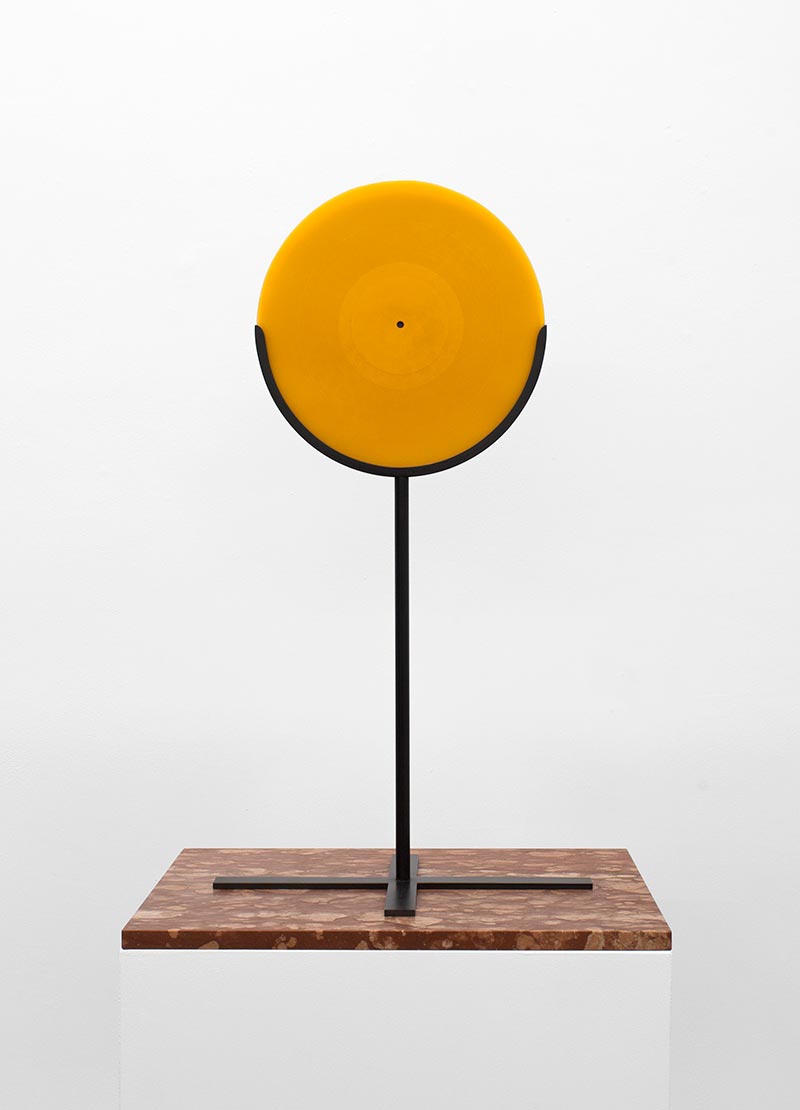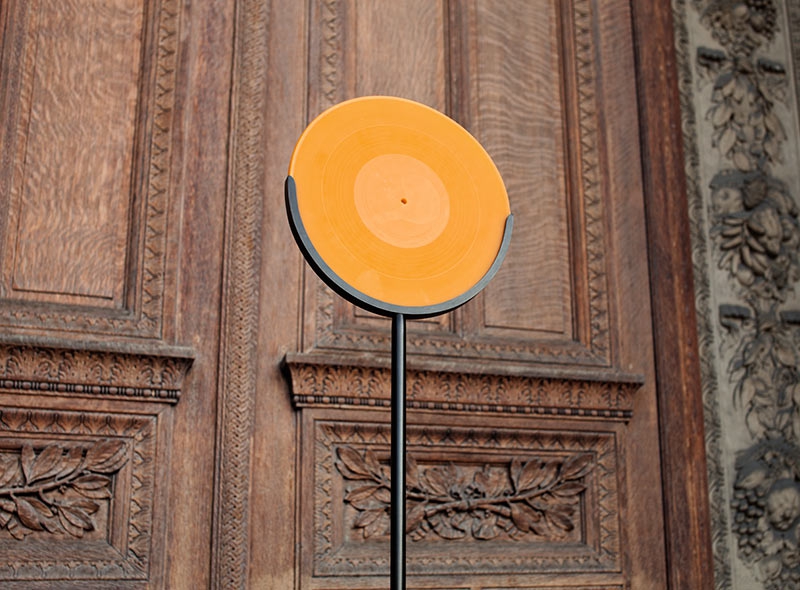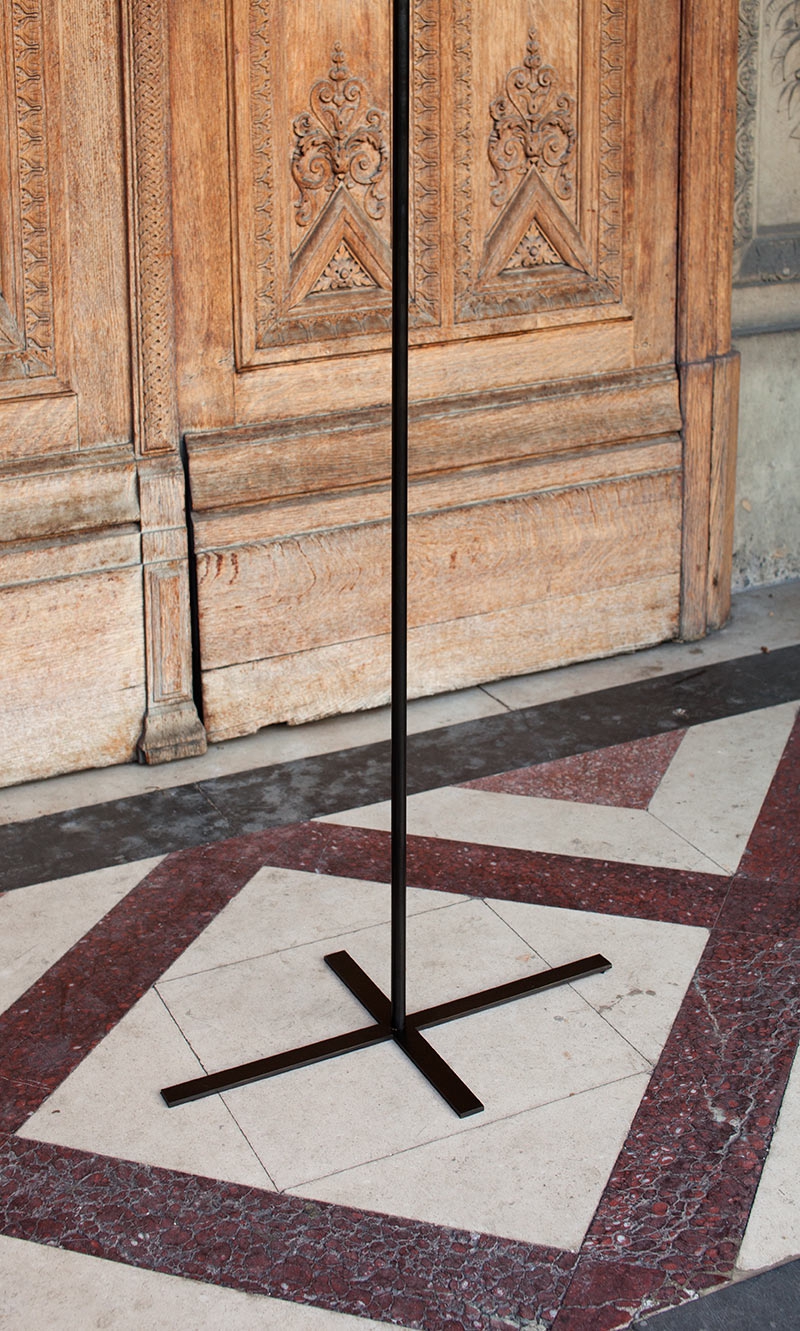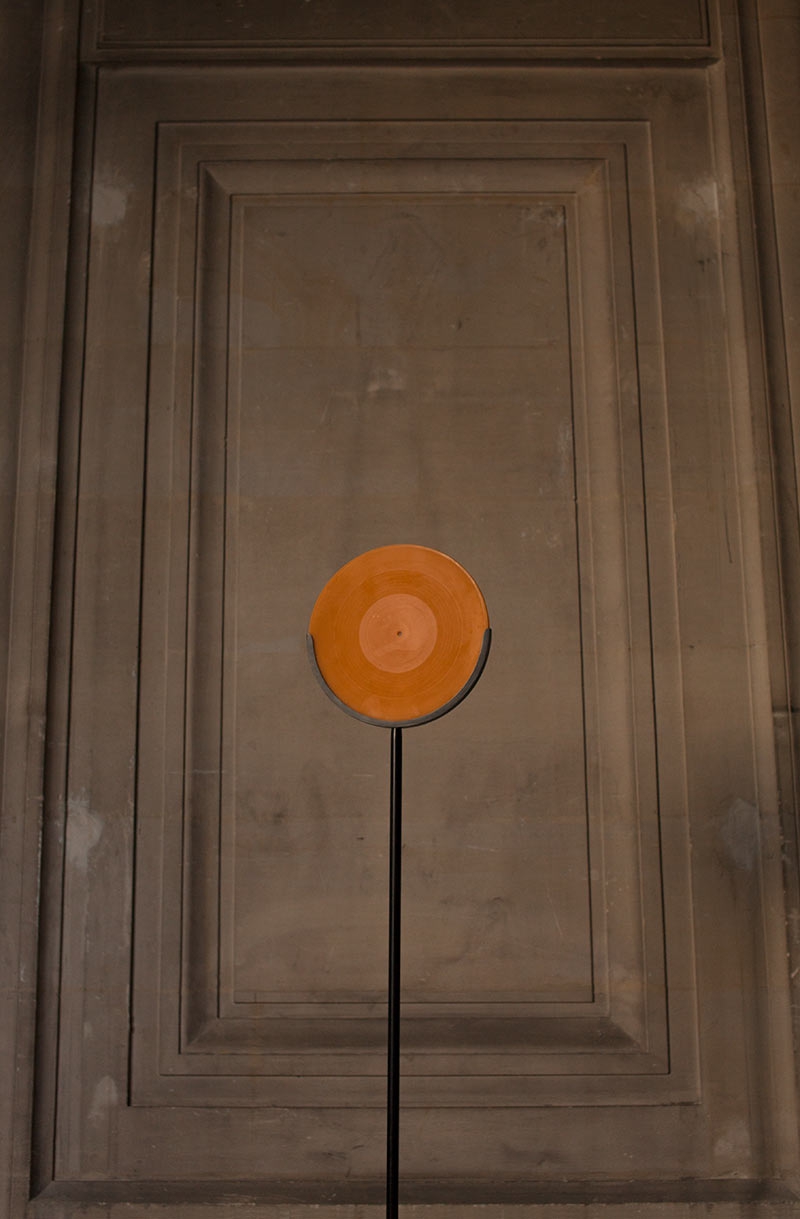" (…) This is a present from a small distant world "
US President Carter's official statement
-

This beeswax disc is a cast of the A side of the LP Angel S35843 cut with Beethoven's
Fifth Symphony (Philharmonia Orchestra / Otto Klemperer, 1961).
The first movement of this recording was chosen to be included in the famous "Voyager Golden Record", a gold plated copper disc sent in space in 1977 by the NASA, to hypothetical beings of another galaxy. The two Voyager spacecrafts -each carrying a copy of the Golden Record, have left the solar system since 2013. They will get closer to another star in 40,000 years. To date, they are among the most distant objects from planet Earth ever sent by humans.

As opposed to its model built to last a billion years, this more fragile wax version has the particularity of being playable only once: a distant echo from planet Earth, a single final signal. The title comes from a sentence written on the original disc by T.Ferris: "To the makers of music - all worlds, all times," inspired by
The Plurality of worlds, a 1686 essay by Fontenelle. The disc is mounted on a structure whose ends are a cross (terrestrial sign) and a circle (solar sign).
 Beeswax LP, brass, marble
Beeswax LP, brass, marble
Two versions: 250 x 30,4 cm and 82 x 30,4 cmCe disque coulé en cire d’abeille est la reproduction exacte de la face A du 33t Angel S35843, gravé de la Cinquième Symphonie de Beethoven (Philarmonia Orchestra /
Otto Klemperer, 1961).
Le 1er mouvement de cette symphonie a été choisi pour être intégré au fameux «Voyager Golden Record», disque de cuivre plaqué or envoyé en 1977 par la NASA dans l’espace, à destination d’hypothétiques êtres vivants d’une autre galaxie. Les deux sondes Voyager —avec chacune à son bord un exemplaire du Golden Record, ont quitté le système solaire depuis 2013. Elles ne passeront près d’une autre étoile que dans 40.000 ans. À ce jour, elles font partie des objets les plus éloignés de la planète Terre jamais envoyés par l’homme.

À l’opposé de son modèle fabriqué pour durer au moins un milliard d’années, cette version de cire, plus fragile, présente la particularité de n’être lisible qu’une seule fois, comme un lointain écho d’une lecture extra-terrestre, un signal unique et final. Le titre provient d’une phrase inscrite sur le disque original: «To the makers of music — all worlds, all times », inspiré par La pluralité des mondes (1686) de Fontenelle. Le disque est monté sur un structure dont les extrémités sont une croix (signe terrestre) et un cercle (signe solaire).

Disque 33t en cire d'abeille, laiton, marbre
Deux versions: 250 x 30,4 cm et 82 x 30,4 cm











